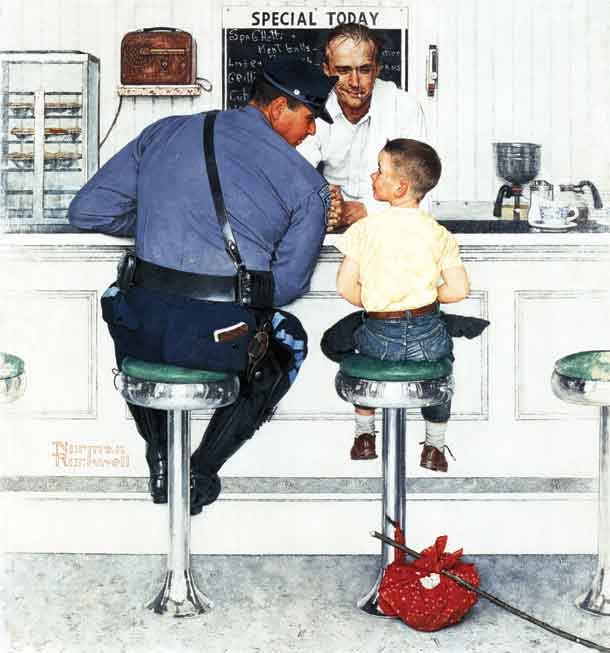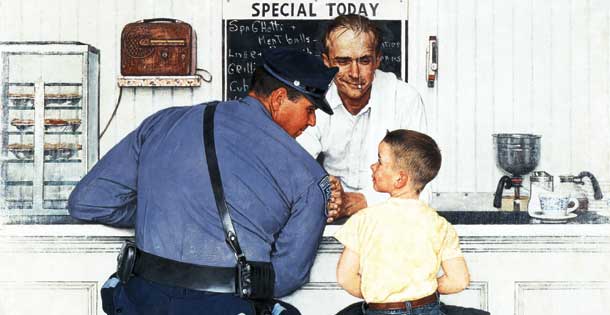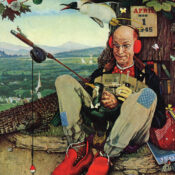
1958 © SEPS
Rockwell’s famous painting The Runaway depicts a child literally on a pedestal–well, barstool–surrounded by a protective and understanding community.
The setting is pristine; this is no ordinary diner. It’s the Platonic ideal of a diner, where the floor is immaculate, the counter gleams, and even the waiter’s clothing and towel are unsullied.
The only prop that suggests a disturbance is the wannabe hobo’s stick and handkerchief.
Normally a scene featuring a runaway child evokes anxiety. Instead, Rockwell’s painting radiates comfort and safety in the form of a triangle of protection surrounding the boy. To the left is the fatherly state-police officer, at the top is the counterman, and to the right is an empty coffee cup, suggesting another good Samaritan had been sitting there not long ago. Perhaps the anonymous diner made the initial call to police and then stayed with the boy until the officer’s arrival. The complete narrative depicts a cocoon-like community taking shifts to watch over a child in trouble.
In the painting, Rockwell portrayed an idyllic version of small-town America. In his sweet, safe universe, no child is ever in danger and no task is more pressing for an officer of the law than to spend a morning with a young runaway. After appearing on the September 20, 1958, cover of the Post, The Runaway began to grace the walls of countless diners and police stations throughout the country.
Fun fact: The Runaway was staged in a Howard Johnson’s restaurant in Pittsfield, Massachusetts. Rockwell later removed all traces of the chain restaurant in favor of a simple blackboard listing the daily specials often found in country diners “to suggest the kid had gotten a little further out of town.”
Become a Saturday Evening Post member and enjoy unlimited access. Subscribe now




Comments
One of Rockwell’s best covers, and in this case I like the effect of the black and white with the color. The insights here also help me appreciate it even more.
Hi William.
You can purchase the baseball special collector’s issue at this link: http://www.shopthepost.com/baspcoed.html. Thank you in advance for your order, and we hope you enjoy it!
Best,
Megan Espinal
Web Editor
The Saturday Evening Post
I am trying to order “special collectors editiion” BASEBALL the glory years.